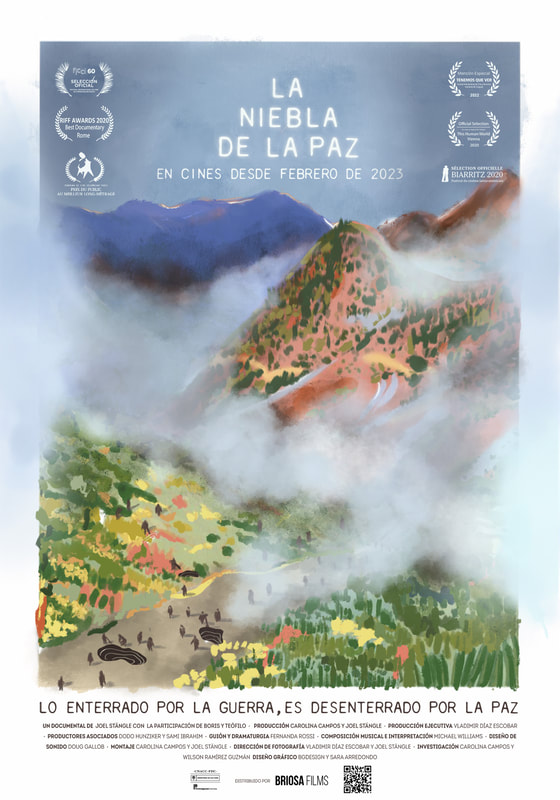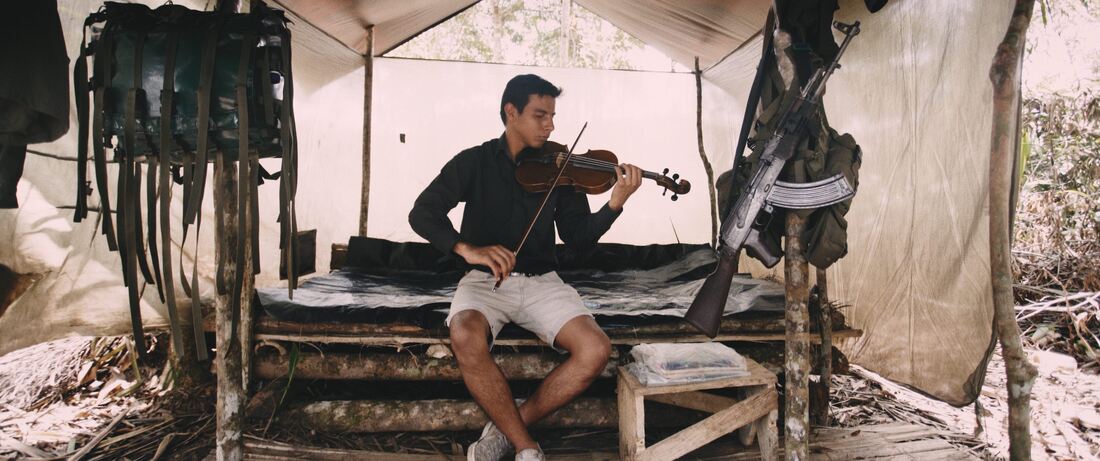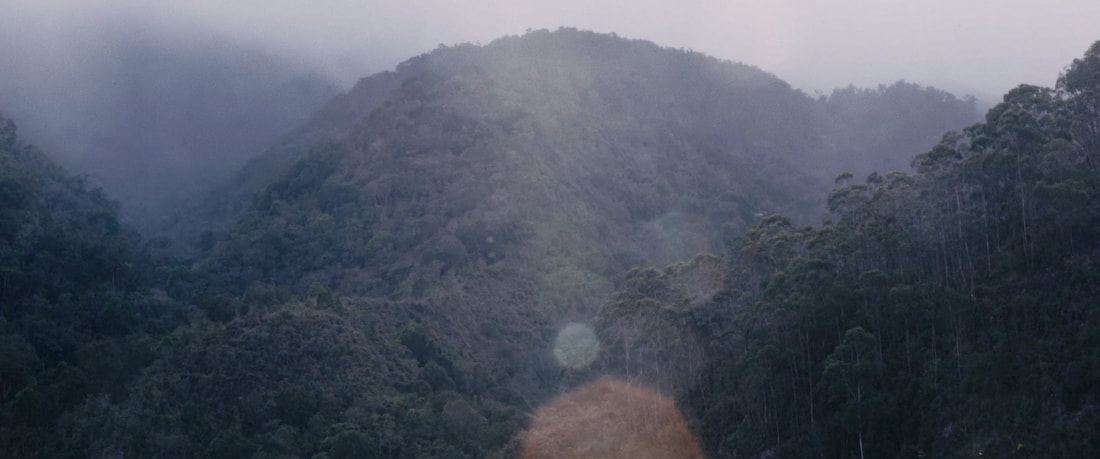SYNOPSIS
|
The mountains of Colombia have been a silent witness through 50 years of war. In the rebel camps deep in the forest, Teo writes the memories of his fellow guerrilleros. Meanwhile Boris, a cameraman for the FARC films behind the scenes of the peace negotiations between FARC leaders and the Colombian government. In the face of historic change, each of the men struggles to have his voice be part of the narrative of war and peace. As they deal with the reality of inserting themselves back into civilian life, they join together in the search for a cache hidden in the mountain. In it are the untold stories and memories of their guerrilla movement which will either reignite their reasons to fight or help reconcile a violent past.
|
Las montañas de Colombia han sido un testigo silencioso de 50 años de guerra. En un campamento guerrillero en lo profundo de la selva, Teo escribe las memorias de sus compañeros. Al mismo tiempo Boris, filma el escenario privado de las negociaciones de paz entre sus comandantes de las FARC y el gobierno de Colombia. De frente a un cambio histórico, cada uno lucha para que su voz haga parte de la narrativa de la guerra y la paz. Mientras lidian con la realidad de reincorporarse a la vida civil, buscan una caleta que escondida en la montaña guarda memorias que pueden atizar la guerra o ayudar a sanar un pasado violento.
|
DIRECTOR'S NOTESWe are our memories. As a society what we choose to remember or forget reveals where we are heading. The Fog of Peace uncovers how memories are created and used to generate a shared narrative. It explores how their meaning can change when the context in which they are recalled changes. This film confronts our relationship with those memories. Who gets to tell their stories and why? Who controls the collective narrative? What is the role of memory in war and in peace?
As a filmmaking team, my wife Carolina, and I, bring both the foreign and national perspective. We are aware that the criticism of FARC’s actions is well documented both internationally and locally. It was Nelson Mandela who taught the importance of listening to others, even if we disagree. He said, "true reconciliation does not consist in merely forgetting the past." In that spirit of reconciliation, it seemed crucial to let the guerrilleros speak for themselves as they seek to abandon the mountains and reinsert into civilian life. The stories we listened to over the span of four years while filming shook the foundations of what we thought we knew. Filming was an observational process. We followed quietly as our characters lead the way collecting individual memories. The editing process mirrored how collective memory happens in real life. The individual recollections juxtapose and merge into collective narrative as time and space shift to create a new more encompassing story. In Colombia the war spread throughout the entire territory, but it is forever remembered in connection to the mountains in which it began. These mountains serve as a constant reminder of what has been lost: the people, the stories, the homes. The mountains are full of land mines and other scars of war, but they are also a symbol of resilience. The forgotten and the visible merge in The Fog of Peace to hold onto memories as the country and landscape are reborn – again. |
NOTAS DEL DIRECTORSomos nuestras memorias. Lo que decidimos recordar u olvidar indica hacia adónde vamos como sociedad. En LA NIEBLA DE LA PAZ se devela cómo las memorias son creadas y usadas para construir una narrativa oficial. Explora cómo sus significados pueden cambiar cuando el contexto en el que se recuerda cambia. Este filme confronta nuestra relación con estas memorias: ¿Quién debe contar su historia y ¿Por qué? ¿Quién controla la narrativa colectiva? ¿Cuál es el rol de la memoria en la paz y en la guerra?.
Como equipo, mi esposa Carolina y yo, contribuimos al proyecto con nuestras propias perspectivas -ella nacional y yo foránea-, somos conscientes de que las acciones de guerra de las FARC han sido ampliamente documentadas en Colombia y en el exterior. Nelson Mandela señaló la importancia de escuchar a los otros incluso cuando estamos en desacuerdo. Además mencionó: “la reconciliación no consiste meramente en olvidar el pasado” con este espíritu de reconciliación, creemos que es crucial que los guerrilleros hablen por sí mismos. Las historias que escuchamos durante los cuatro años de filmación hicieron tambalear lo que creíamos saber. Filmar fue un proceso observacional: seguimos a nuestros personajes por sus caminos mientras recolectaban memorias personales. El proceso de edición fue un reflejo de cómo la memoria colectiva se construye en la vida real. La recolección individual se yuxtapone y emerge con la narrativa colectiva, mientras tiempo y espacio cambian para crear una nueva y más incluyente historia. En Colombia la guerra se ha extendido a todo el territorio, pero siempre será recordada en conexión con la montaña en donde empezó. Estas montañas sirven de constante recordatorio de lo que se ha perdido: vidas, historias, tierras. Las montañas están llenas de minas antipersona y otras cicatrices de guerra, pero al mismo tiempo son símbolo de resiliencia. Lo olvidado y lo visible emergen en LA NIEBLA DE LA PAZ para preservar las memorias mientras el país y los territorios renacen –de nuevo-. |


